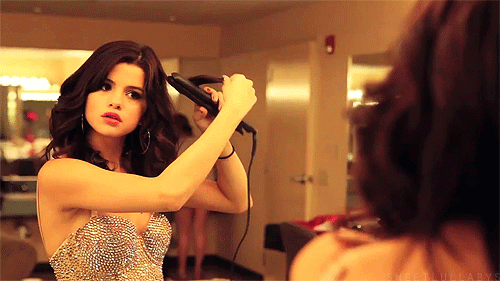
Image: Tumblr
It should come as no surprise that styling your hair with heat — straightening irons in particular — can potentially damage it.
Yet if you’re anything like me, the only time you give this any thought is when you apply your straightener to a section of your hair, forgetting you just got out of the shower, and tssss! You hear that telltale sizzle.
RELATED: 5 hairstyles that will survive wet weather.
As Chief Technical Officer at ghd’s Research and Development Facility in Cambridge, Dr Tim Moore knows rather a lot about the havoc styling tools can inflict on hair.
Dr Moore and his team spend a lot of time figuring out how to overcome the potentially damaging features common among many heat stylers available on the market. Their efforts have culminated in the creation of platinum, ghd’s very swish new straightener. Dr Moore was in Sydney recently for platinum’s launch, and talked The Glow through the many ways heat stylers can damage your hair if not made or used carefully:
1. Getting hot ‘n heavy
Hands up if you've ever cranked up the temperature dial because it felt like your straightener wasn't having any effect? It seems logical that adding more heat will make your hair respond and style better, but it can actually really harm it.
"A lot of irons on the market have temperature dials up to 230 degrees centigrade, which is very bad for hair ... it literally melts it," Dr Moore explains. Ongoing styling at such a high temperature can permanently change the colour of your hair and dramatically reduce its 'tensile strength' — this can cause your strands to break halfway down and then fall off when you brush. (Post continues after gallery.)


